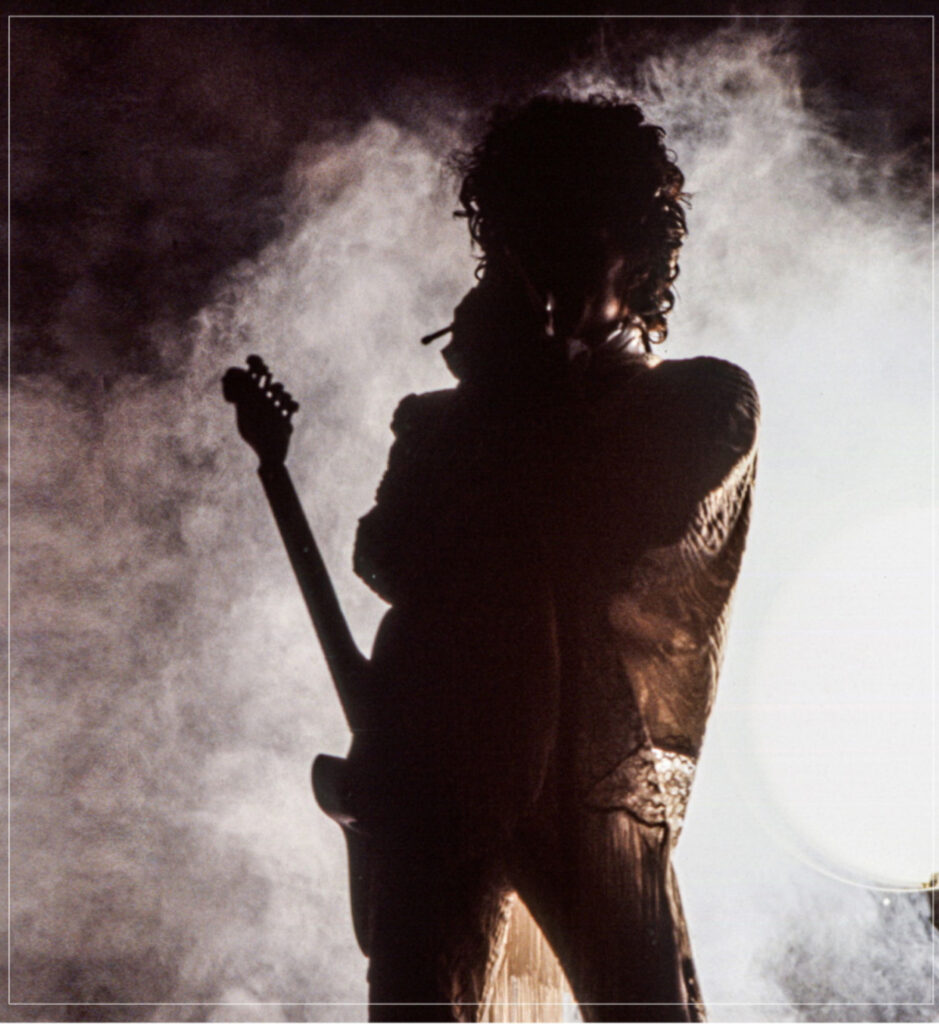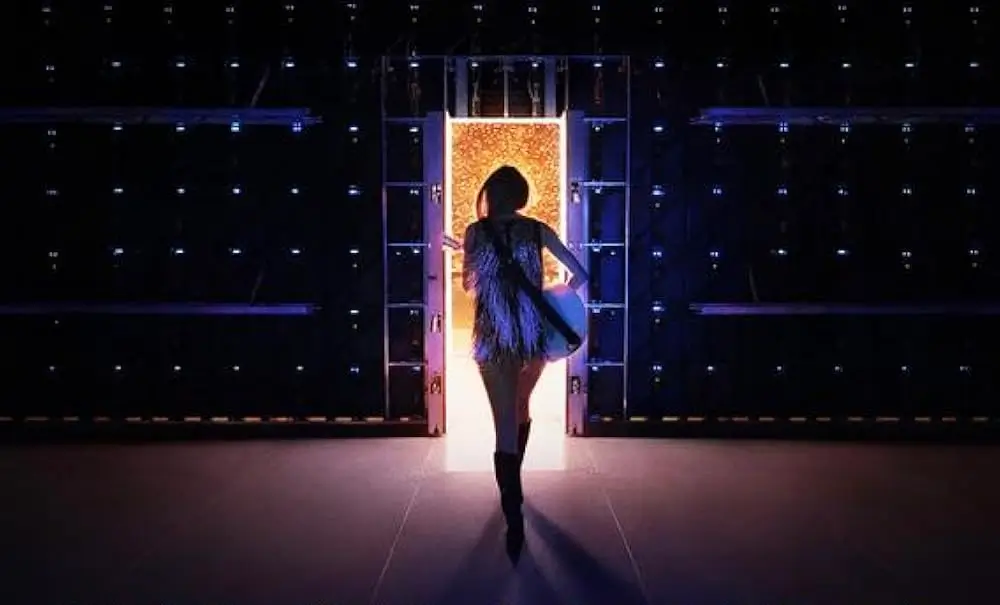When Prince opened his magnum opus Purple Rain (1984) with the incandescent sermon that is “Let’s Go Crazy,” he wasn’t simply asking a crowd to dance. He was delivering a spiritual ultimatum. In one frenzied, genre-defying burst of funk, rock, gospel, and punk, Prince Rogers Nelson transformed pop music into a cathedral of ecstatic release. “Let’s Go Crazy” is not just a song—it’s a revolution disguised as celebration, a pulpit for existential defiance, and an anthem of cosmic joy that insists we dance while the world burns.
The Electric Eulogy: A Prelude to Transcendence
The song opens not with a beat or riff, but a sermon—quiet, deliberate, and strangely biblical. “Dearly beloved, we are gathered here today to get through this thing called life.” With those words, Prince steps into the role of a preacher, summoning not just his audience, but their souls. It’s equal parts televangelist theater and gospel gravitas. But unlike the fire-and-brimstone preachers of tradition, Prince is offering not damnation, but liberation through sound.
This spoken-word invocation serves as more than an introduction—it’s a framing device for the entire Purple Rain album, positioning the music not as entertainment, but as ritual. “Electric word, life,” he says, drawing a line between the analog rituals of church and the digital pulse of his soundscape. He isn’t here to save us. He’s here to wake us up.
The Sonic Flow: Chaos Conducted into Harmony
Once the sermon dissolves, the organ gives way to a fiery burst of drums, a funk bassline, and a jagged rock rhythm guitar—ushering in a genre collision that few artists before or after could manage with such seamless audacity. “Let’s Go Crazy” doesn’t rest in a single lane. It oscillates between Minneapolis funk, arena rock, and psychedelic punk with wild abandon. Prince isn’t just blurring genre—he’s obliterating the borders between them.
The structure is kinetic and elastic: verse-chorus, sure, but laced with breakdowns, scream-laced bridges, and that climactic guitar solo that sounds like Hendrix resurrected through a LinnDrum. His vocals range from flirtatious whisper to ecstatic howl. It’s not tidy. It’s not polite. It’s gloriously uncontained.
Midway through, the song drops into a dizzying breakdown as Prince mocks the “elevator”—his metaphor for the force trying to bring you down. He doesn’t offer resolution. Instead, he offers resistance. “Punch a higher floor!” he cries, as if ascension is not divine but defiant. The guitar solo that follows doesn’t resolve the tension; it explodes it.
Thematic Core: Madness as Salvation
On paper, the title “Let’s Go Crazy” might suggest a party track. But Prince, ever the trickster-prophet, infuses it with existential urgency. Madness, in this context, is not collapse—it’s liberation. It’s about dancing on the edge of apocalypse. It’s about rejecting conformity, repression, and the social codes that try to flatten the human spirit.
Prince invites us to reclaim our wildness. To resist the numbing effect of consumer culture, of 9-to-5s and polite silence, of spiritual death masquerading as suburban security. His elevator metaphor isn’t just clever—it’s biblical. The “elevator” is fear. It’s society. It’s mortality. But Prince’s answer isn’t prayer—it’s ecstatic rebellion.
“Let’s go crazy, let’s get nuts,” he cries—not as an act of chaos, but of intentional disruption. Madness, here, is sacred. To “go crazy” is to wake up.
A Performance Immortal: The Stage as Sanctuary
Few performances in rock history match the raw theatricality of Prince playing “Let’s Go Crazy.” From his 1985 Grammy performance to the iconic Super Bowl XLI halftime show in the rain, the song transcends recording. It becomes possession. He snarls, spins, shreds his guitar like it’s speaking in tongues. His body moves like it’s been struck by some electric deity.
The guitar solo at the end—jagged, melodic, untamed—is a sermon in distortion. He doesn’t merely play it. He exorcises it. Watching him perform the song feels like watching someone return from the other side—glowing, drenched, divine.
The power of “Let’s Go Crazy” in live settings lies in its refusal to die. It mutates. It expands. Prince would often stretch the final minutes into improvisational solos that evoked both melancholy and ecstasy, ending in silence or screams depending on the night. It was never the same twice. Because neither is life.
The Culture: Purple Gospel for a Generation
Released as the lead single from Purple Rain, “Let’s Go Crazy” reached #1 on the Billboard Hot 100 in 1984. But its true legacy lies not in chart position—it lies in its ability to speak across generations, across despair, across grief.
After Prince’s death in 2016, the song took on renewed poignancy. It was played at vigils, blasted from car stereos, spun by DJs at tribute nights. Its opening line—“Dearly beloved…”—sounded eerily prescient. As though he knew all along that he was composing not just a dance track, but a soundtrack for mourning and resurrection.
That’s the alchemy of Prince. He didn’t write music for moods—he wrote mantras for survival.
Living While We Can
In a career of seismic hits and deep cuts, “Let’s Go Crazy” remains one of Prince’s purest distillations of his ethos: joy as resistance, sex as spirit, art as salvation. It is thunderous and theatrical, irreverent and sacred, structured and anarchic. In it, you can hear the DNA of James Brown, Jimi Hendrix, Little Richard, and gospel choirs. But the vision? That’s pure Prince.
The song tells us what he told us all along: Life is short. Art is eternal. The elevator is always coming. So while we can—we go crazy.
No comments yet.








